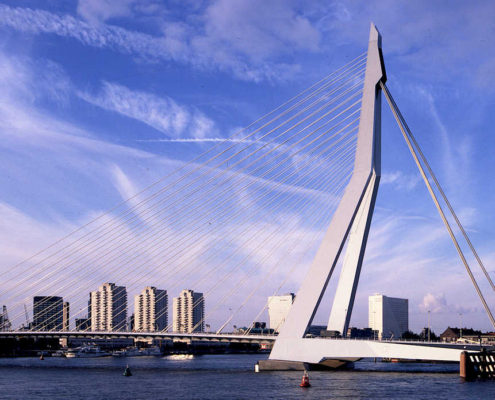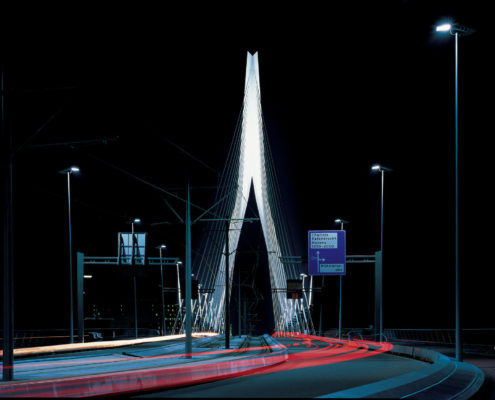The Erasmus bridge is the product of an integrated design approach. Construction, urbanism, infrastructure and public functions are given shape in one comprehensive gesture, but one that is complex to read, nevertheless. During preliminary and definitive design phases, the design was continuously refined, although its main outlines and features were constant. The five differently shaped, concrete piers, the railings, the landings, the details of fixtures and joints, and the maintenance equipment were all integrally designed.
Tags: Infrastructure, Landmark, Rotterdam
Rising to a height of 139 metres and extending to a breath of 800 metres, the bridge over the river Maas forms an orientation point within the city. The asymmetric pylon with its bracket construction in sky-coloured steel can appear thin as a needle, or wide as a harp, which is one of its nicknames. The long, diagonal cables physically and metaphorically link Rotterdam South to the City Centre. Thirty-two stays attached to the top of the pylon and eight backstays keep the construction in balance. Five concrete piers carry the steel deck that is divided into different traffic lanes: two footpaths, two cycle tracks, tram rails, and two carriageways for cars.
Sweeping concrete staircases lead up from the parking garage on the north side, extending the curve of the landing to pedestrian level and contributing to the public quality of the bridge as a square in the sky. At night, when the bridge is reduced to a silhouette, a special light project emphasises the interior of the bridge, with its bundled cables rising high above the water as a dematerialized reflection of its daytime identity.
Information provided in part by: Architect Magazine







